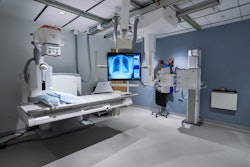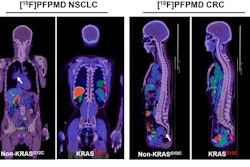Lung cancer incidences continue to increase among younger women, according to a research letter published October 12 in JAMA Oncology.
What's prompting the trend needs more study, wrote a team led by Ahmedin Jemal, DVM, PhD, of the American Cancer Society in Atlanta.
"[We] found that the higher lung cancer incidence in women than in men has not only continued in individuals younger than 50 years but also now extends to middle-aged adults as younger women with a high risk of the disease enter older age," the group reported. "[But] reasons for this shift are unclear because the prevalence and intensity of smoking are not higher in younger women compared with men except for a slightly elevated prevalence among those born in the 1960s."
Lung cancer screening is performed using low-dose CT (LDCT) and is recommended annually for people ages 50 to 80 with a 20-pack-year smoking history who currently smoke or have quit within the past 15 years. Previous ACS research found higher incidence of lung cancer in women than in men in the younger than 50 age group -- results contrary to studies that established higher burden of the disease in men that couldn't be explained by smoking differences, the team wrote. But whether this trend has continued into the present is unclear.
Jemal and colleagues investigated lung cancer incidences patterns by age and sex, using data from 22 registries of the National Cancer Institute’s Surveillance, Epidemiology, and End Results (SEER) program from between 2000 and 2019. They categorized cases by sex; by age in five-year increments; and by year of diagnosis (2000 to 2004, 2005 to 2009, 2010 to 2014, and 2015 to 2019), then calculated age-specific lung cancer incidence rates per 100,000 person years using SEER*Stat version 8.4.1.3 and female to male rate disease incidence ratios using the Tiwari method.
The group found the following:
- Overall, lung cancer incidence rates showed greater decline in men than in women between 2000 to 2004 and 2015 to 2019; this trend led to a higher incidence in women between the ages of 35 and 54.
- Over the study timeframe in individuals aged 50 to 54 years, the rate of lung cancer per 100,000 person-years decreased by 44% in men and 20% in women.
- The female-to-male incidence rate ratio among people between the ages of 50 and 54 increased from 0.73 (with 1 as reference) between 2000 and 2004 to 1.05 between 2015 and 2019.
- Among those between the ages of 70 and 74, the female-to-male incidence rate ratio increased from 0.62 during 2000 and 2004 to 0.81 during 2015 and 2019.
Further research is needed to explain these lung cancer incidence trends, according to the authors.
"Lung cancer is still the leading cause of cancer death in the U.S. with 80% of cases and deaths caused by cigarette smoking," Jemal said in a statement released by the ACS. "To mitigate the high burden of the disease in young and middle-aged women, greater effort is needed to promote tobacco cessation at provider and community levels, improve access to tobacco cessation aids and programs through expansion of Medicaid, and increase lung cancer screening in eligible women. Also, further research is needed to shed light on the reasons for the higher lung cancer incidence in younger and middle-aged women."
The complete study can be found here.




















